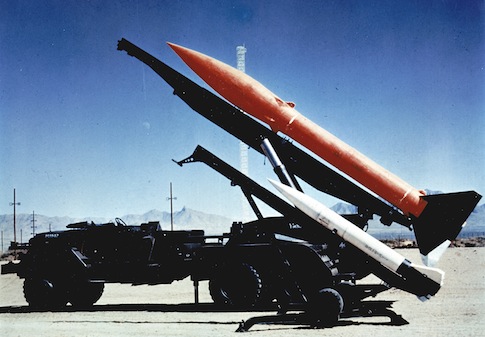America must change its policies regarding its nuclear weapons arsenal if it wishes to remain safe in the coming century, according to a new study from the Center for Strategic and International Studies (CSIS).
Clark Murdock, an expert in strategic planning and defense at CSIS, writes in the study, ‘Project Atom,’ that the effects of global nuclear proliferation will dominate American foreign policy between 2025-2050 if the United States does not revamp its policies today, including modernizing its nuclear weapons and seeking enhanced tactical nuclear capabilities.
"The value of nuclear weapons as a ‘trump card’ for negating U.S. conventional power was enhanced by the U.S. invasion of Iraq in 2003 to prevent Saddam Hussein from acquiring a nuclear weapon," Murdock writes. "If the United States apparently believes that it can be deterred by an adversary’s nuclear weapons, why wouldn’t a nonnuclear ‘regional rogue’ want one?"
The root of global nuclear ambitions lies in American strength, according to Murdock. The clout of the U.S. military leads non-nuclear nation-states to seek nuclear capabilities.
As the United States plans its nuclear posture for the 2025-2050 timeframe, Murdock recommends that the American inferiority to Russian nonstrategic nuclear forces should be addressed. Murdock says that a variety of tactical nuclear weapons, including some small-scale missiles, should be developed to counter Russian capabilities.
"U.S. nuclear forces were designed for a global conflict involving the exchange of thousands of high-yield weapons, not limited exchanges of low-yield weapons," she writes. "Since most U.S. nuclear response options are large, ‘dirty,’ and inflict significant collateral damage, the United States might be ‘self-deterred’ and not respond ‘in kind’ to discriminate nuclear attacks."
Murdock’s recommendations were based on two assumptions regarding what could happen in 2025-2050 in the absence of effective American nuclear weapons planing. The first assumption was that the United States could lose its deterrence ability because of a failure to prevent further nuclear proliferation. The second assumption was that there may be more than 11 nuclear powers after the year 2030.
Barry Blechman and Russell Rumbaugh, contributing authors to the study, also point out that China will be a major threat in the future.
"Still, given its 20 years of investments in building a more modern military and continuing economic growth, China could plausibly threaten the United States’ ability to conduct specific military actions in regions near China’s coasts within the next several decades," Blechman and Rumbaugh write. "If realized, such threats could jeopardize America’s ability to fulfill its commitments to defend certain allies."
